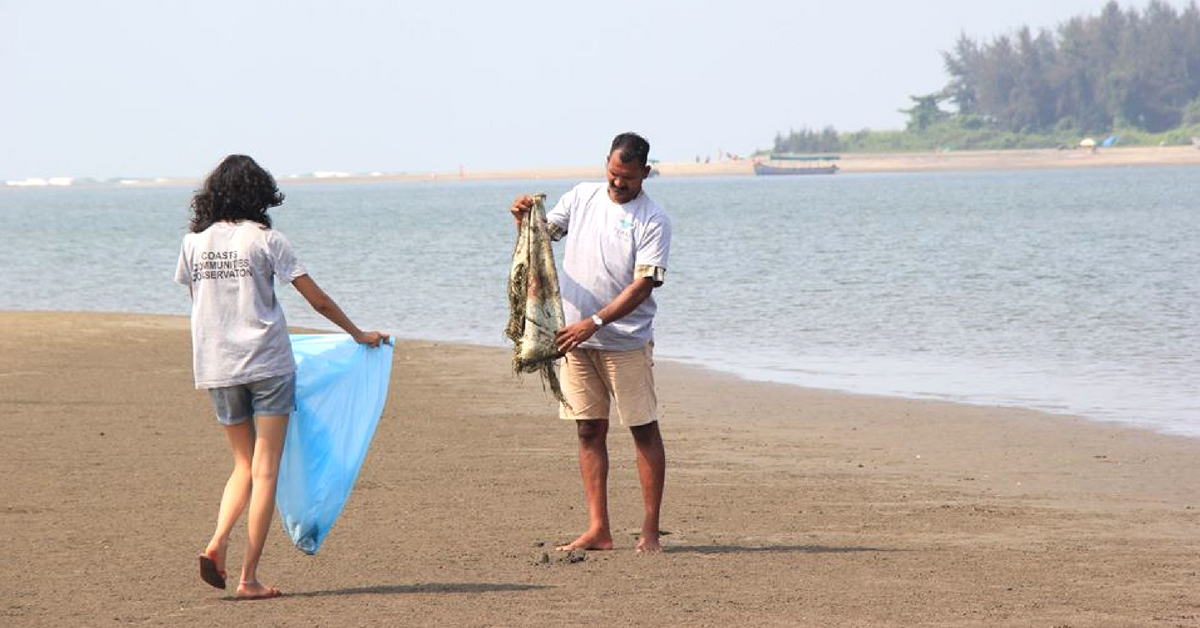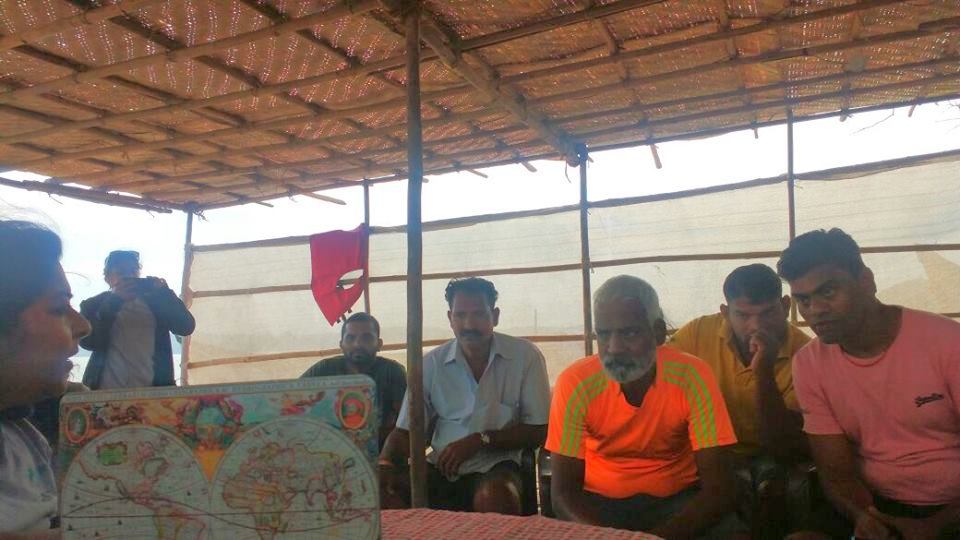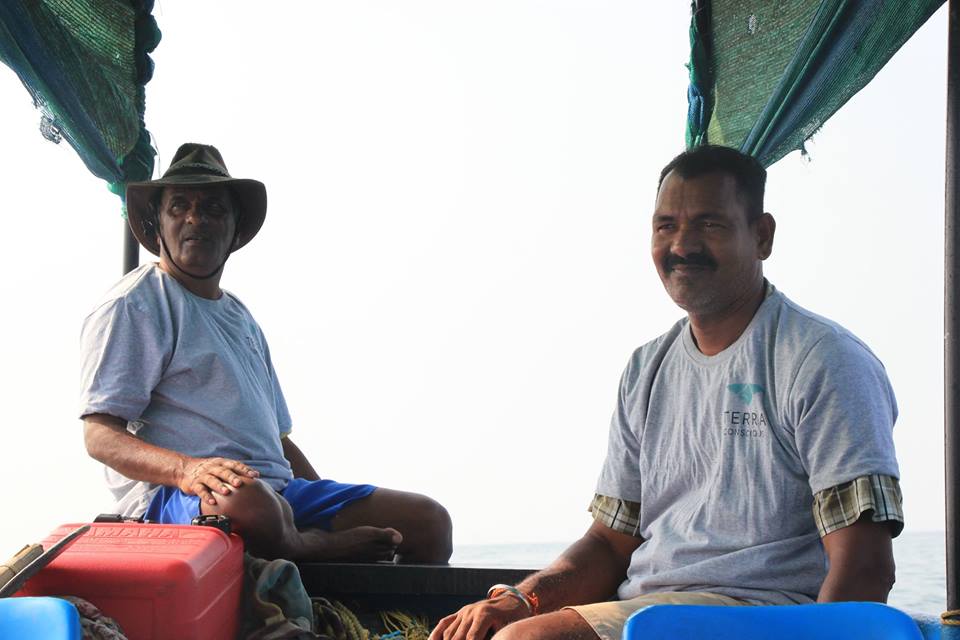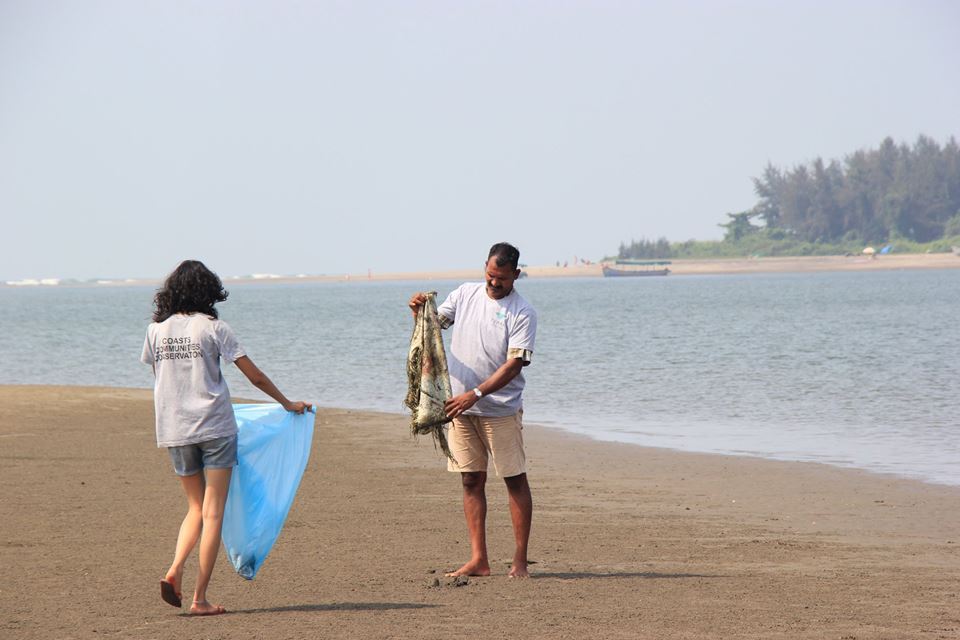Planning to See Dolphins in Goa? Here’s How You Can Help Nature While Doing It!
These boat rides in Goa are a part of the tourist experience. However, the combined efforts of the boatmen, a social enterprise and tourists, can also make it an ethical experience!

A trip to Goa during the tourist season (October to May) is incomplete if you do not take joy boat rides. The boat rides where you are promised to get up close and personal with Indian Ocean Humpback Dolphin. They are found off the coast of Goa and live their entire lives within 2-3 kilometres of the shore. However, these boat rides are sadly hampering the lives of these dolphins.
It has been observed that when these dolphins come to the bay to feed, the boats chase them and play loud music which hampers communication between fellow dolphins.
Thus, these animals find it difficult to search for food, to procreate, and to socialise.

Also, offshore pollution due to incessant increase in tourism and overfishing in Goa is affecting their livelihood. They are protected under Schedule I of the Wildlife Protection Act of India, 1972 and classified as ‘Endangered’ by the International Union for Conservation of Nature (IUCN).
The threat to this marine diversity of Goa needs to be curbed, and that’s how ‘Ocean Biodiversity Experience’ has emerged. Their work involves exploring estuarine and oceanic habitat, sharing information about the local species of dolphin, such as behaviour, habitat use, conservation threats, etc.
In Goa, it is initiated by Terra Conscious, a social impact travel enterprise. Puja Mitra, Founder-Director, Terra Conscious, says, “We run an ethical dolphin-watching programme as an example of social impact tours, where we enable boat operators to run their trips by internationally accepted dolphin watching guidelines. We have designed a four-hour experience which is called ‘Ocean Biodiversity Experience’.”
This trip begins with sensitising the tourist with a presentation and while their boat partners follow guidelines such as switching off the engines in the presence of dolphins, keeping their vessels parallel to the dolphin pods (families) and maintaining a distance from the animals while providing an opportunity to observe them and their habitat without creating any disturbance.
Also Read: Don’t Destroy Nature: How to Be a Considerate Wildlife Enthusiast
The training is essentially two-fold: it involves sharing information about the focal species (Humpback dolphins) through interactive presentations/photos/videos with boat-operator partners, so they learn about the physical attributes, habitat use, behaviour, intelligence and conservation threats. The second step is to understand how to operate the boat around dolphin pods and help them to reduce the pressure they cause on the habitat by their presence.
Now, this knowledge is passed on to the local boatmen from the village of Morjim, a village situated in coastal part of North Goa.
A group of eight operators who run three boats have joined this programme, and Terra Conscious serves as their knowledge guide, marketing partner and capacity-building support.

All these boatmen are fishermen who have been involved in fishing at Morjim bay for nearly three generations. But, now due to mechanised fishing, which affected their livelihood, they thought of shifting to dolphin boat trips.
“We used to show dolphins as we didn’t have any information about them. But, now with this training, we give the information related to dolphins and also tell our customers not to throw plastic in the water. We also don’t play any sound,” says Samir Morje, one of the community boat-operator partners.
Puja mentions that due to the training programme, they have learnt how to observe the dolphins, how to save on fuel and receive customer feedback. “It became a mutually-supportive partnership, where the boatmen contribute their experiences, local knowledge, boats, and skills at sea and we provide scientific information about the dolphins and share international operations guidelines; we market them and their skills to a conscious travel market and also support them in conducting the trip each time,” says Puja.
She has earlier worked as Senior Programme Coordinator for the World Wide Fund for Nature – India (WWF-India), Goa State Office. She conceptualised and executed a pioneering integrated project assessing the impact of boat-based tourism on dolphins and corals in Goa.
This training also made the boatmen conscious about the ecology and what harm they were earlier causing. They also realised the benefits of such trips.
“Now, whenever we see a dolphin 50-100 meters away, we stop our boat engines. This also helps in saving on fuel,” says Chandrahas Dhumat, another community boat-operator partner.

They also take precautionary action and focus on speaking about ecology. “Earlier our customers used to jump in the water with the dolphins. We don’t allow that anymore. Now, we even show different birds which are seen during this trip,” says Morje.
These trips are also viable for them financially. The regular boat ride costs Rs 300 and lasts around 45-60 minutes. The ethical boat rides, on the other hand, cost Rs 2,500 per head and last for four hours, which includes the knowledge presentation, a souvenir, breakfast, onboard snacks. This enables them to provide the boat operators with a set fair price per trip that is not dependent on how many guests are on board.
“So whether we have three guests or a full capacity of 10 guests, they earn double the amount they would earn for a full boat otherwise. Their regular trips are at the cost of Rs 300, which even in a full boat, makes their earning potential only Rs 3,000 per trip, which often does not cover their costs of fuel and boat maintenance. Through our approach, they earn more money, burn less fuel, conduct the trip ethically and gain not just financially, but also through the respect and recognition they gain from the guests who admire their initiative and indigenous knowledge,” explains Puja.
Puja feels that cheaper trips force the operators to overload their boats, add inappropriate add-ons such as serving alcohol or allowing people to dance or disregard safety protocols and chase the animal in an attempt to show a sighting in an overcrowded space. These unethical practices do not serve the boatmen in the long run either, as they still have to deal with rising living and fuel costs. On the other hand, she feels that their partnership is not just a ‘sightseeing trip’ or a ‘watersport’, but that it is necessary to give information about a species which is endangered.
Puja now hopes that this pilot project becomes a model for other boat operators. The total number of boat operators in Goa are around 400 who are involved in dolphin watching boat rides.
The largest concentration is at Sinquerim and Coco beach in North Goa

Puja maintains that such a large number is unsustainable and what is needed is a conscious market. She signs off, “If a more conscious market starts to develop around this activity, the chances are that the kind of unregulated trips you see now will gradually transform since the nature of the demand will influence the supply. So if people start asking for ethical, knowledge-driven dolphin watching experiences, more operators will see value in changing the way they operate.”
As Chandrahas concludes, “Now we are safeguarding these dolphins, it will, in turn, help our children in future to do these dolphin rides.”
You May Also Like: These Nifty Eco-Stores Are Helping Goans Eat Local, Go Zero-Waste & Live Sustainable!
(Written by Arti Das and Edited by Shruti Singhal)
Like this story? Or have something to share?
Write to us: [email protected]
Connect with us on Facebook and Twitter.
NEW: Click here to get positive news on WhatsApp!
If you found our stories insightful, informative, or even just enjoyable, we invite you to consider making a voluntary payment to support the work we do at The Better India. Your contribution helps us continue producing quality content that educates, inspires, and drives positive change.
Choose one of the payment options below for your contribution-
By paying for the stories you value, you directly contribute to sustaining our efforts focused on making a difference in the world. Together, let’s ensure that impactful stories continue to be told and shared, enriching lives and communities alike.
Thank you for your support. Here are some frequently asked questions you might find helpful to know why you are contributing?


This story made me
-
97
-
121
-
89
-
167











